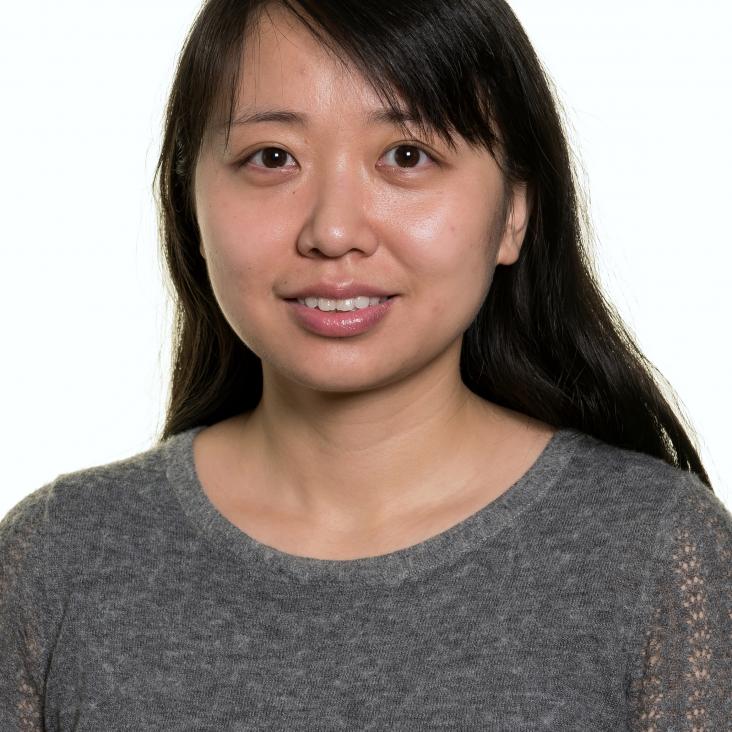Resonance-Amplified Terahertz Near-Field Spectroscopy of a Single Nanowire
Nano Letters American Chemical Society 24:49 (2024) 15716-15723
Abstract:
Nanoscale material systems are central to next-generation optoelectronic and quantum technologies, yet their development remains hindered by limited characterization tools, particularly at terahertz (THz) frequencies. Far-field THz spectroscopy techniques lack the sensitivity for investigating individual nanoscale systems, whereas in near-field THz nanoscopy, surface states, disorder, and sample-tip interactions often mask the response of the entire nanoscale system. Here, we present a THz resonance-amplified near-field spectroscopy technique that can detect subtle conductivity changes in isolated nanoscale systemssuch as a single InAs nanowireunder ultrafast photoexcitation. By exploiting the spatial localization and resonant field enhancement in the gap of a bowtie antenna, our approach enables precise measurements of the nanostructures through shifts in the antenna resonant frequency, offering a direct means of extracting the system response, and unlocking investigations of ultrafast charge-carrier dynamics in isolated nanoscale and microscale systems.A thorough experimental assessment of THz-TDS plasma diagnostic techniques for nuclear fusion applications
Review of Scientific Instruments AIP Publishing 95:10 (2024) 103519
Direct and integrating sampling in terahertz receivers from wafer-scalable InAs nanowires
Nature Communications Springer Nature 15:1 (2024) 103
Abstract:
Terahertz (THz) radiation will play a pivotal role in wireless communications, sensing, spectroscopy and imaging technologies in the decades to come. THz emitters and receivers should thus be simplified in their design and miniaturized to become a commodity. In this work we demonstrate scalable photoconductive THz receivers based on horizontally-grown InAs nanowires (NWs) embedded in a bow-tie antenna that work at room temperature. The NWs provide a short photoconductivity lifetime while conserving high electron mobility. The large surface-to-volume ratio also ensures low dark current and thus low thermal noise, compared to narrow-bandgap bulk devices. By engineering the NW morphology, the NWs exhibit greatly different photoconductivity lifetimes, enabling the receivers to detect THz photons via both direct and integrating sampling modes. The broadband NW receivers are compatible with gating lasers across the entire range of telecom wavelengths (1.2–1.6 μm) and thus are ideal for inexpensive all-optical fibre-based THz time-domain spectroscopy and imaging systems. The devices are deterministically positioned by lithography and thus scalable to the wafer scale, opening the path for a new generation of commercial THz receivers.The 2023 terahertz science and technology roadmap
Journal of Physics D: Applied Physics IOP Publishing 56:22 (2023) 223001
Abstract:
Terahertz (THz) radiation encompasses a wide spectral range within the electromagnetic spectrum that extends from microwaves to the far infrared (100 GHz-∼30 THz). Within its frequency boundaries exist a broad variety of scientific disciplines that have presented, and continue to present, technical challenges to researchers. During the past 50 years, for instance, the demands of the scientific community have substantially evolved and with a need for advanced instrumentation to support radio astronomy, Earth observation, weather forecasting, security imaging, telecommunications, non-destructive device testing and much more. Furthermore, applications have required an emergence of technology from the laboratory environment to production-scale supply and in-the-field deployments ranging from harsh ground-based locations to deep space. In addressing these requirements, the research and development community has advanced related technology and bridged the transition between electronics and photonics that high frequency operation demands. The multidisciplinary nature of THz work was our stimulus for creating the 2017 THz Science and Technology Roadmap (Dhillon et al 2017 J. Phys. D: Appl. Phys. 50 043001). As one might envisage, though, there remains much to explore both scientifically and technically and the field has continued to develop and expand rapidly. It is timely, therefore, to revise our previous roadmap and in this 2023 version we both provide an update on key developments in established technical areas that have important scientific and public benefit, and highlight new and emerging areas that show particular promise. The developments that we describe thus span from fundamental scientific research, such as THz astronomy and the emergent area of THz quantum optics, to highly applied and commercially and societally impactful subjects that include 6G THz communications, medical imaging, and climate monitoring and prediction. Our Roadmap vision draws upon the expertise and perspective of multiple international specialists that together provide an overview of past developments and the likely challenges facing the field of THz science and technology in future decades. The document is written in a form that is accessible to policy makers who wish to gain an overview of the current state of the THz art, and for the non-specialist and curious who wish to understand available technology and challenges. A such, our experts deliver a ‘snapshot’ introduction to the current status of the field and provide suggestions for exciting future technical development directions. Ultimately, we intend the Roadmap to portray the advantages and benefits of the THz domain and to stimulate further exploration of the field in support of scientific research and commercial realisation.Optimised Spintronic Emitters of Terahertz Radiation for Time-Domain Spectroscopy
Journal of Infrared, Millimeter, and Terahertz Waves Springer Nature 44:1-2 (2023) 52-65


